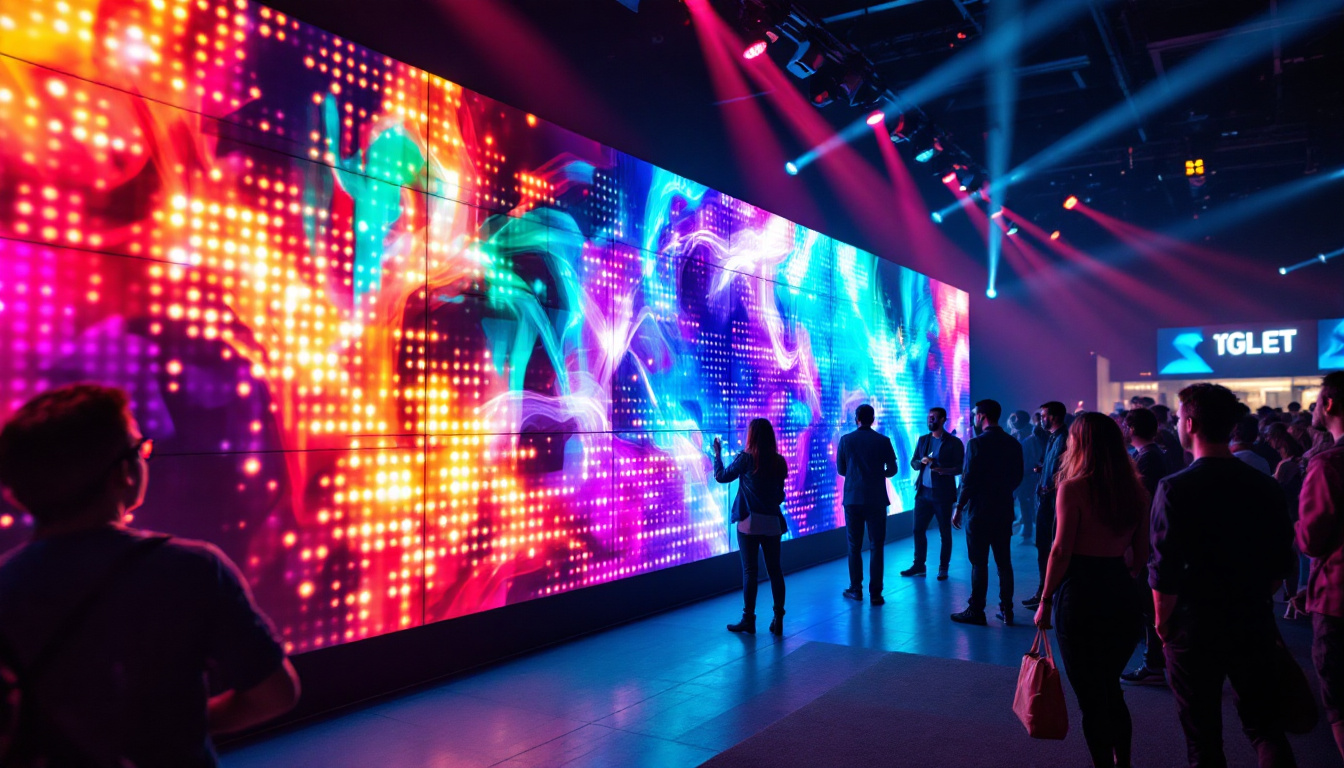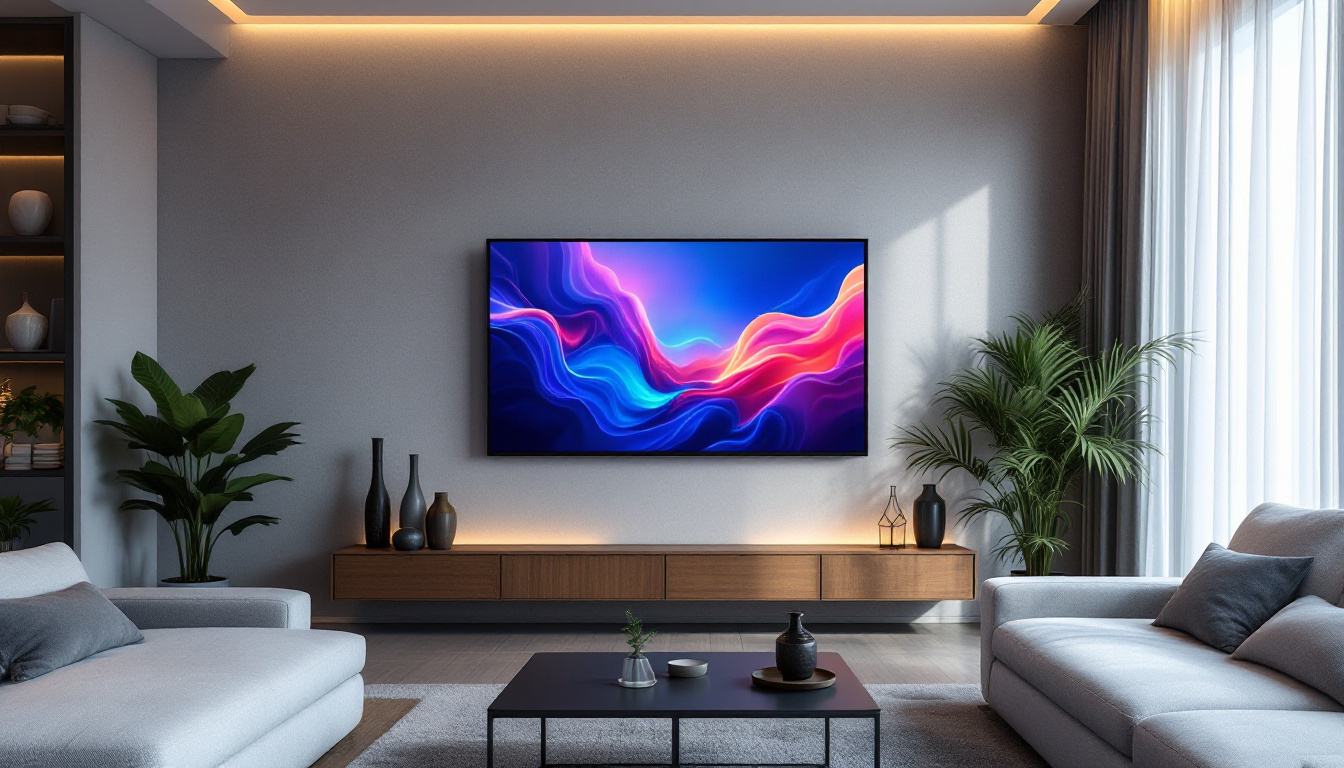In the modern age, churches are increasingly looking to enhance their worship experience and community engagement through technology. One of the most impactful ways to achieve this is through the installation of LED displays. This article delves into the role of church renovation companies in integrating LED technology, the benefits of LED displays, and considerations for churches planning to upgrade their facilities.
The Role of Church Renovation Companies
Church renovation companies play a crucial role in transforming worship spaces to meet contemporary needs. They are responsible for not only the aesthetic aspects of renovation but also for integrating advanced technologies like LED displays into the church environment. These companies understand that a church is not just a building; it is a community hub where people come together to worship, learn, and grow. Therefore, their renovations aim to enhance the spiritual experience while ensuring that the space remains welcoming and functional for all congregants.
Understanding the Renovation Process
The renovation process typically begins with an assessment of the existing space. Church renovation companies evaluate the architectural integrity, historical significance, and the specific needs of the congregation. This ensures that any upgrades, including LED displays, are not only functional but also complementary to the church’s overall design. They often conduct surveys and gather feedback from church members to understand how the space is currently used and what improvements can be made to better serve the community.
During this stage, renovation companies will consult with church leaders to understand their vision. This collaboration is essential for creating a space that reflects the church’s mission while incorporating modern technology. Additionally, they may explore various design styles that resonate with the congregation’s identity, whether it be traditional, contemporary, or a blend of both. This thoughtful approach helps to ensure that the renovations foster a sense of belonging and enhance the worship experience for everyone involved.
Design and Integration
Once the assessment is complete, the design phase begins. Church renovation companies will create a comprehensive plan that includes the placement and specifications of LED displays. This involves considering sightlines, brightness levels, and how the displays will interact with other elements in the worship space. The design team often utilizes 3D modeling software to visualize the proposed changes, allowing church leaders to see how the new elements will fit within the existing architecture before any physical work begins.
Integration of LED displays requires technical expertise. Renovation companies often work with AV specialists to ensure that the installation is seamless, providing a high-quality experience during services and events. This collaboration extends beyond just the technical installation; it includes training church staff on how to operate and maintain the new equipment effectively. Furthermore, renovation companies may also suggest complementary upgrades, such as improved acoustics or enhanced lighting systems, to create a holistic environment that supports various types of worship and community gatherings. By taking these additional factors into account, they ensure that the renovated space is not only visually appealing but also acoustically and functionally optimized for a wide range of activities.
Benefits of LED Displays in Churches
LED displays offer numerous advantages for churches looking to modernize their facilities. From enhancing communication to improving the worship experience, these displays can significantly impact how congregations engage with their faith.
Enhanced Visibility and Communication
One of the primary benefits of LED displays is their visibility. Whether used for displaying song lyrics, sermon notes, or announcements, LED screens ensure that everyone in the congregation can see the information clearly. This is particularly important in larger spaces where traditional projection methods may fall short.
Moreover, LED displays can be updated in real-time, allowing churches to communicate important messages instantly. This flexibility is invaluable for sharing information about events, services, and community outreach initiatives.
Dynamic Worship Experience
LED displays can transform the worship experience by providing dynamic visuals that complement the service. From vibrant backgrounds during worship songs to video presentations that enhance sermons, these displays can create an immersive atmosphere that captivates the congregation.
Additionally, the ability to display multimedia content allows churches to engage younger audiences who may respond better to visual stimuli. This can foster a more inclusive environment where all members feel connected and involved.
Energy Efficiency and Longevity
LED technology is known for its energy efficiency compared to traditional lighting and projection systems. This not only reduces the church’s carbon footprint but also leads to significant cost savings on energy bills over time.
Furthermore, LED displays have a long lifespan, often exceeding 50,000 hours of use. This durability means that churches can invest in these systems without the constant worry of replacement or maintenance costs.
Considerations for Churches Planning to Upgrade
While the benefits of LED displays are compelling, churches must carefully consider several factors before proceeding with an upgrade. Understanding these elements can help ensure a successful installation that meets the congregation’s needs.
Budgeting for the Upgrade
Budgeting is a critical aspect of any renovation project. Churches need to assess their financial resources and determine how much they can allocate for the installation of LED displays. This includes not only the cost of the displays themselves but also installation, maintenance, and potential upgrades to existing infrastructure.
It may be beneficial to explore funding options, such as grants or donations, specifically earmarked for technology upgrades. Engaging the congregation in fundraising efforts can also foster a sense of community ownership in the project.
Choosing the Right Technology
Not all LED displays are created equal. Churches must consider the type of content they plan to display, the size of the space, and the viewing distance when selecting the appropriate technology. Factors such as resolution, brightness, and outdoor vs. indoor usage can significantly impact the effectiveness of the display.
Consulting with professionals who specialize in AV technology can provide valuable insights into the best options for a church’s specific needs. This expertise can help avoid costly mistakes and ensure that the technology enhances the worship experience.
Training and Maintenance
Once the LED displays are installed, training staff and volunteers on how to operate the technology is essential. This ensures that the displays are used effectively during services and events. Many church renovation companies offer training sessions as part of their services, which can be invaluable for fostering confidence among users.
Additionally, regular maintenance is crucial for keeping the displays in optimal condition. Establishing a maintenance schedule can help prevent issues and prolong the lifespan of the technology. Churches should also consider who will be responsible for ongoing support and troubleshooting.
Case Studies: Successful LED Display Integrations
Examining successful case studies can provide valuable insights into how LED displays have positively impacted churches. These examples highlight the transformative power of technology in enhancing worship experiences.
Community Engagement at St. Mark’s Church
St. Mark’s Church recently renovated its worship space, incorporating a large LED display at the front of the sanctuary. The church aimed to improve visibility for its growing congregation and enhance the overall worship experience.
Since the installation, the church has reported increased engagement during services. The display is used to project song lyrics, sermon notes, and even live-streamed events, allowing members who cannot attend in person to participate remotely. This has fostered a greater sense of community and inclusivity.
Interactive Worship at Grace Fellowship
Grace Fellowship took a unique approach by integrating interactive LED displays into their worship space. These displays allow congregants to submit prayer requests and questions during services, which are then displayed in real-time.
This interactive element has not only made services more engaging but has also encouraged participation and dialogue among members. The church has seen a boost in attendance and a stronger sense of community as a result of this innovative approach.
Future Trends in Church Technology
The integration of LED displays is just one aspect of the broader trend of technology in churches. As technology continues to evolve, so too will the opportunities for churches to enhance their worship experiences.
Integration with Virtual Reality and Augmented Reality
Looking ahead, the use of virtual reality (VR) and augmented reality (AR) in church settings is on the rise. These technologies can create immersive experiences that allow congregants to engage with biblical stories and teachings in new and exciting ways.
For instance, VR could be used for virtual tours of historical biblical sites, while AR could enhance sermon illustrations with interactive elements. As churches explore these technologies, LED displays will likely play a crucial role in making these experiences accessible to all members.
Increased Focus on Live Streaming
The COVID-19 pandemic accelerated the trend of live streaming church services, and this focus is expected to continue. LED displays can enhance live streaming by providing clear visuals and engaging content for both in-person and online audiences.
Churches will need to invest in high-quality LED displays that can accommodate both live viewers and those participating remotely. This dual focus on in-person and online engagement will be essential for fostering community in an increasingly digital world.
Conclusion
Church renovation companies play a vital role in helping congregations navigate the integration of LED displays into their worship spaces. The benefits of enhanced visibility, dynamic engagement, and energy efficiency make LED technology an attractive option for modern churches.
As churches consider upgrading their facilities, careful planning and consideration of budget, technology, and training will ensure a successful implementation. By learning from successful case studies and staying informed about future trends, churches can create vibrant, engaging environments that foster community and spiritual growth.
In a world where technology continues to shape our experiences, churches have the opportunity to embrace innovation and enhance their mission through thoughtful integration of LED displays.
Discover LumenMatrix LED Display Solutions for Your Church
Ready to elevate your church’s worship experience with the latest in LED display technology? LumenMatrix is at the forefront of creating immersive visual environments that inspire and engage congregations. From Indoor and Outdoor LED Wall Displays to specialized solutions like Vehicle LED Displays and LED Sports Displays, our extensive range ensures that your church can communicate with impact and clarity. Embrace the future of church technology and check out LumenMatrix LED Display Solutions today to transform your worship space into a dynamic and visually stunning setting.































